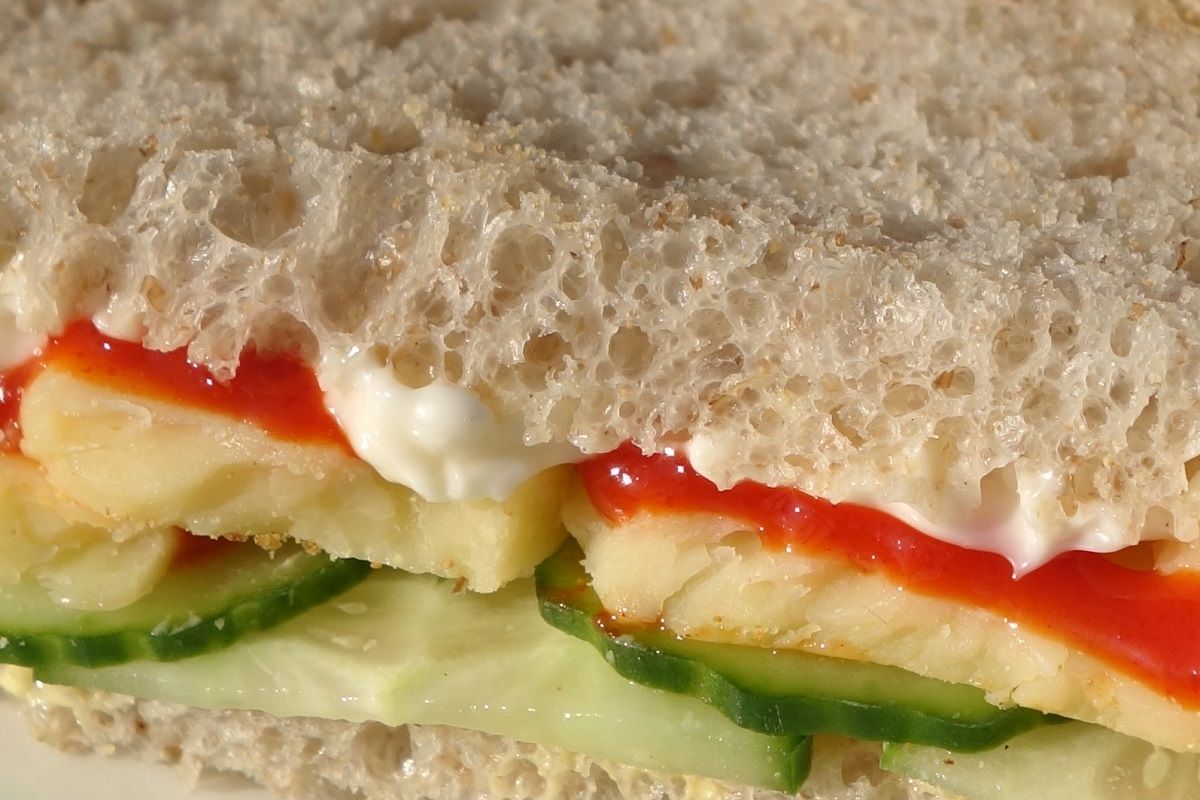Rather than being a particular type of bread, sourdough (well, a sourdough starter culture) is a way of making dough rise. Any type or style of bread that can be made using fresh or dried baker’s yeast can be made using a sourdough starter. Fancy a white tin loaf with a close-textured crumb for the kids’ sarnies or to stick in the toaster? Not a problem.
Despite the name, sourdough bread doesn’t have to be sour. Want to use your starter to make brioche? Go for it! If you’ve tried a loaf with a pronounced tang, that was down to the taste of the baker and/or her/his skill and knowledge (or lack of) in controlling the acidity.
Oh, and a note a about time: While the dough has to put in the hours, you only have to put in the minutes. You do bits here and there and get on with your life in between.
### Ingredients
Makes one large (about 800g) loaf, or a couple of small ones
**Leaven**
100g Sourdough starter (1:1 wheat or rye flour to water)* You will need to make this well ahead or talk to a friendly baker
100g Bread or plain flour (white, brown or wholemeal)
100g Water straight from the tap
**Dough**
300g Leaven (ie all of the above)
400g Bread or plain flour (white, brown or wholemeal)
250g Water straight from the tap
6-8g Salt (about one level 5ml teaspoon)
*Refreshed/fed and bubbling like a good ‘un.
### Method
Make the leaven by combining the three ingredients in a bowl, covering and leaving for about 10-12 hours (eg overnight) at room temperature, until bubbling.
Weigh the water in a bowl and stir in the salt until dissolved, then mix in the leaven and flour. There’s no need to knead – you can stop once you have a shaggy dough but there’s no dry flour left. If using plain (rather than bread/strong) flour, read these tips on developing gluten.
Cover the bowl (eg with a carrier bag that you can reuse again and again) and leave to rest for half an hour or so.
Scoop the dough out of the bowl with a wetted dough scraper, or your hand, stretch it and fold it in half, then repeat this action. You can find videos demonstrating how on t’internet. Place the dough back in the bowl and cover again.
Leave at room temperature to prove/rise. Depending on what temperature your room is (mine was about 20-21°C when I did tests of this bread) this might be six to eight hours. Watch the dough, not the clock – if it doesn’t seem to have risen enough, leave it longer.
During this time, repeat the stretch’n’fold action every now and then. You could do it hourly or every other hour, but doesn’t have to be that often.
Shape the dough however you like eg for an oiled tin, banneton, or free-standing on an oiled baking tray. Again, the intermesh is full of how-to videos. Cover and leave for two or three hours until it’s fully risen.
Heat the oven (with a baking stone or tray in place if you’re proving dough in a banneton) to about 220-250°C.
Turn out the dough if proved in a banneton, dust the top with flour, if you like, and/or slash it with a lame/grignette or murderously sharp knife and put straight into the oven.
Bake a large loaf for about 45 minutes, or small ones for about half an hour, turning the temperature down after 10 minutes to about 220°C if you started higher. Turn out onto a wire rack and leave to cool before slicing – bread can be gummy and lose a lot of moisture if you cut when hot.
### Substitutions
In answer any ‘can I…’ questions about swapping or adding ingredients, tweaking the ratios, changing the times and temperatures, the answer is yes, you can. Every tweak creates a different recipe that will give you different results. Seek out those recipes and techniques and/or experiment for yourself and, if you come up with a bread you love, please share your recipe and your tips!
Recipe © Chris Young / www.realbreadcampaign.org
